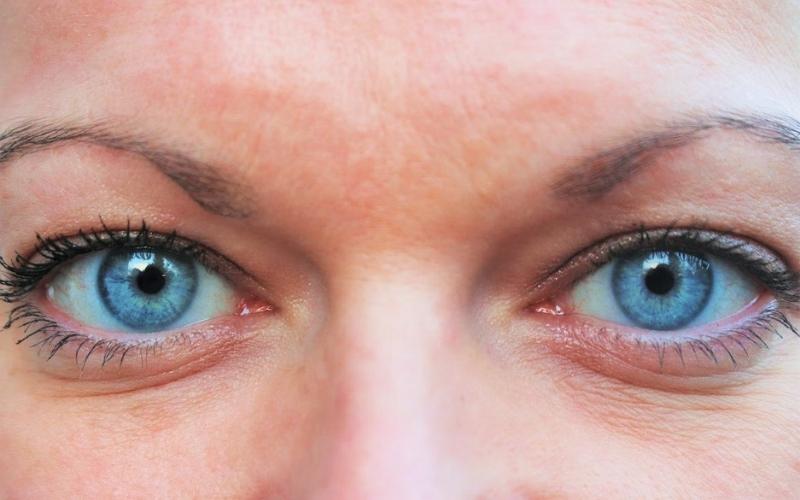Uneven Skin Tone: What You Need to Know

Uneven skin tone is a common problem caused by various factors, including sun damage, acne scarring, and natural aging. While many over-the-counter products claim to even out skin tone, they often contain harsh chemicals that can aggravate the problem. Incorporating a few simple steps into your skincare routine can help prevent your skin from becoming uneven.
What Is An Uneven Skin Tone?
Uneven skin tone refers to a condition in which the skin appears discolored or blotchy. It can be caused by many factors, including sun damage, exposure to certain chemicals or pollutants, excess melanin production, inflammation, certain medical or skin conditions, and even medications you are taking.
Uneven skin tone can occur on any area of the body with exposed skin, but it’s more common on the face, neck, chest, and hands. Uneven skin tone can range from mild (a few isolated patches of discoloration) to severe (an overall mosaic-like appearance). In some cases, uneven skin tone may accompany other symptoms like dryness, itchiness, or redness.
While uneven skin tone is generally not a health concern, it can be cosmetically unappealing and difficult to conceal with makeup. Luckily, many ways can help even out the skin’s complexion. These include topical creams and serums, chemical peels, laser therapy, and microdermabrasion.
What Does Uneven Skin Tone Look Like?
Uneven skin tone can take on many appearances, depending on the underlying cause. In some cases, it may simply look like a light patch of skin that is a different color from the surrounding area.
Uneven skin tone can be hard to spot if you don’t know what you’re looking for. But, generally, uneven skin tone refers to light/dark or red/brown skin discoloration. It can be bluish, blotchy, or reddish, with patches of darker brown or lighter pinkish hues.
The typical types of skin unevenness are listed below:
- Acne: Uneven skin tone and texture are caused by clogged pores resulting in black and whiteheads, which can appear as sore, red pimples.
- Brown Spots/Post-Inflammatory Hyperpigmentation (PIH): Brown spots can occur due to skin inflammation. Additionally, PIH is seen in post-cosmetic procedures such as laser treatment as a side effect.
- Dark Circles: Also cited as periorbital hyperpigmentation, the under-eye bags are frequently seen with dark circles.
- Melasma: The majority of the time, this skin issue causes dark or grey areas to form on the face (forehead, nose bridge, cheeks, and upper lips). It might also appear on your shoulders, arms, and legs, which are areas of your body that are exposed to the sun.
- Redness/Post-Inflammatory Erythema (PIE): The redness or red spots/areas develop due to broken blood vessels. It may be a result of a cosmetic procedure.
- Rosacea: This skin disorder is marked by facial redness and lumps resembling pimples on the cheeks and nose.
- Sun Spots: Light brown or black spots may appear on the skin due to repeated sun exposure and sunburn.
Multiple instances of these skin issues may occur simultaneously, which makes addressing skin unevenness even more challenging. Many people have some degree of uneven skin tone and don’t even realize it. It’s only when the discoloration is extreme that it becomes noticeable.
Causes of Uneven Skin Tone
Uneven skin tone and skin discoloration can be caused by a variety of intrinsic and extrinsic factors, including:
Changes in Hormones
Hormonal fluctuations may cause several skin issues that result in an uneven skin tone. According to a study, melasma has been connected to higher levels of estrogen and progesterone. It causes the skin to produce abnormal amounts of melanin, which manifests as brown or gray areas.
Melasma is frequently felt during or after oral contraceptives, which change your body’s hormonal levels throughout pregnancy.
Genetics and Aging
Your skin’s normal aging process includes skin issues like fine lines, wrinkles, and age spots. Your natural skin tone is greatly influenced by your genes as well.
Like vitiligo, some pigmentary skin conditions are inherited. An autoimmune skin ailment called vitiligo induces big, uneven, white patches on the skin, which can appear all over the body. When this illness first appears, the discoloration may eventually extend farther.
Environmental Hazards
Your skin can be adversely affected by airborne pollutants such as carbon dioxide, smoking, dust, and chemicals. They pass through your skin and covertly produce free radicals, which result in collagen and elastin loss.
Antioxidants, such as melanin, are the greatest approach to controlling free radicals. The antioxidant characteristics of melanin eliminate these undesirable elements and protect the vital proteins in your skin. The immune system instinctively shifts into defense mode, and the skin starts manufacturing excess melanin, eventually causing the skin tone to become uneven.
Cosmetic Procedures
Getting various cosmetic procedures, such as laser and intense pulsed light (IPL) therapy, to treat skin issues can lead to unintended side effects, including erythema, PIH, and rashes.
It could take months for the hyperpigmentation to go away or perhaps become permanent. Darker complexion people may face even greater potential threats.
Lifestyle Preferences
Your everyday activities and diet can also cause an uneven skin tone. A high-glycemic diet has been linked to elevated insulin levels that enhance acne and skin irritation. Furthermore, rosacea flare-ups that cause facial redness are connected to the consumption of alcohol and spicy foods.
You develop dark circles under your eyes when you don’t get enough sleep. Long-term sun exposure raises your risk of developing sun damage and related skin issues like age spots and fine lines.
Use of Topical Products
In addition to your daily activities, topical skin care products may also have an impact on your skin tone. Your skin may be hypersensitive to certain chemicals in some topicals, which can cause allergic contact dermatitis. The result could be itchiness and redness, making your skin tone uneven.
Identify Your Skin Type
Identifying your skin type is one of the most important steps in achieving and maintaining healthy skin. The main skin types are normal, dry, oily, and combination. It can be hard to tell, but your skin type plays a big role in how you should care for your skin.
Here are a few quirky hints to help you to identify your skin type:
- Dry Skin: If you feel your skin to be tight and dry after washing, you probably have dry skin. Dry skin produces less sebum when compared to other skin types, making it more susceptible to dehydration and irritation. People with dry skin may also feel itchy, and their skin may be red or flaky.
- Oily Skin: It is characterized by shiny pores that are often enlarged. Oily skin produces more sebum when compared to dry skin, leading to clogged pores, blackheads, and breakouts.
- Combination Skin: If your skin mixes two or more skin types, you probably have combination skin. People with combination skin usually have medium-sized pores that may be visible on their faces. The area around their nose and forehead is usually oily. The rest of their face is usually dry. People with this skin type usually don’t have many problems with pimples or blackheads. However, they may still get shiny in the T-zone (forehead, nose, and chin) and dry cheeks during the day.
- Normal Skin: Normal skin will have a healthy sebum balance and moisture. Even though the T-zone may be slightly oily, the ratio of sebum to moisture is generally balanced.
Once familiar with your skin type, you can tailor your skincare routine to meet your specific needs. Using the right skincare products and taking good care of your skin can help protect it from staying healthy and balanced.
Ways To Prevent Skin From Becoming Uneven
Various factors can cause skin discoloration and uneven skin tone. While several different treatments are available, including topical creams and laser therapy, prevention is always the best cure.
Here are a few suggestions for keeping your skin even and free from discoloration:
- Use sunscreen every day, even if you don’t plan to spend time in the sun. UV rays penetrate clouds and damage your skin, even on gloomy days.
- Be careful about the products you use on your skin. Many skincare products contain harsh chemicals that can cause irritation and lead to uneven skin tone.
- Eat a healthy diet and stay hydrated. Skin that is well-nourished and properly hydrated is less likely to develop discoloration.
- Avoid picking at pimples or other blemishes. It can lead to scarring and cause the skin’s pigment to become dark and uneven.
- See a dermatologist if you have concerns about your skin tone. A skin specialist will be able to address and analyze your individual needs and recommend the best course of treatment.
Following these tips can help prevent your skin from becoming uneven or discolored.
A Word Of Caution
While uneven skin tone is usually cosmetic, it can sometimes signify a more serious underlying health problem. If you are apprehensive about your skin’s appearance, it is always best to consult with a dermatologist or other medical professional. They will examine your skin carefully and determine if there is an underlying cause for your uneven skin tone. You can achieve more even-looking skin and improve your overall complexion with the right treatment plan.
FAQs
Q: What ingredients to look for in a product to treat uneven skin tone?
A: Vitamin C, hydroquinone, niacinamide, aloe vera, and retinoids are some ingredients that are helpful in treating uneven patches on your skin.
Q: When do you need to consult a doctor for uneven skin tone?
A: Generally, skin needsand requirements vary from person to person. So, it is a good idea to consult a dermatologist if you have severe uneven skin tone or any other skin conditions with irritation.
Sources
- Uneven Skin Tone/Texture : https://aedit.com/concern/uneven-skin-tonetexture
- What Can People Do To Even Their Skin Tone : https://www.medicalnewstoday.com/articles/how-to-even-skin-tone#how-to-even-skin-tone





